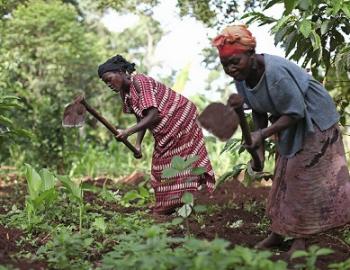Climate-Smart Agriculture? A review of current practice of agroforestry and conservation agriculture in Malawi and Zambia
Climate-Smart Agriculture? A review of current practice of agroforestry and conservation agriculture in Malawi and Zambia
This Food and Agriculture Organisation working paper consists of a review of current practices in agroforestry and conservation agriculture (CA) in Malawi and Zambia respectively. These practices come under the concept of ‘climate-smart agriculture’, an approach seen as necessary to counter significant population and climate-based challenges that the region faces. Climate-smart agriculture emphasises the use of farming techniques that increase yields whilst reducing climate vulnerabilities and emissions. The study brings together the evidence on the use, yield, and socio-economic impacts of these techniques, through a comprehensive literature review.
After providing some background on the agriculture and climate change context for each country, the report looks in-depth at agroforestry in Malawi, providing information on crop yields, the different aspects and techniques being used, economic feasibility, impacts on livelihoods and food security, and the rate of adoption. An in-depth look at CA in Zambia follows in a similar format, before the carbon mitigation co-benefits of each is assessed.
The authors draw six main findings from the research:
- Strong evidence exists for benefits on annual food crop yields from agroforestry in Malawi, both as substitute and a complement for inorganic fertilisers.
- While agroforestry does appear to offer income and livelihood benefits, the pace of adaptation in Malawi has been slow to-date.
- There is weak but positive evidence of yield benefits of conservation agriculture in Zambia, particularly in drier areas, but it unclear how much this can be attributed directly to CA practices themselves; this requires further research.
- There is also positive but inconclusive evidence for financial and livelihood benefits of CA in Zambia, with some authors highlighting the increased labour costs (though these are inevitably higher in the beginning of CA processes, and should reduce in subsequent years).
- Considerable constraints exist to the adoption of CA in Zambia, primarily due to the increased labour costs involved in digging basins and weeding outweighing the labour saved on tillage. In 2010, approximately 10 per cent of smallholder farmers in Zambia practised CA, with many doing so only due to government incentives (estimated at 80 per cent in 2003).
- The literature review suggests that agroforestry offers much higher potential for carbon sequestration that CA, though very little literature exists specific to Malawi and Zambia.
</ul



